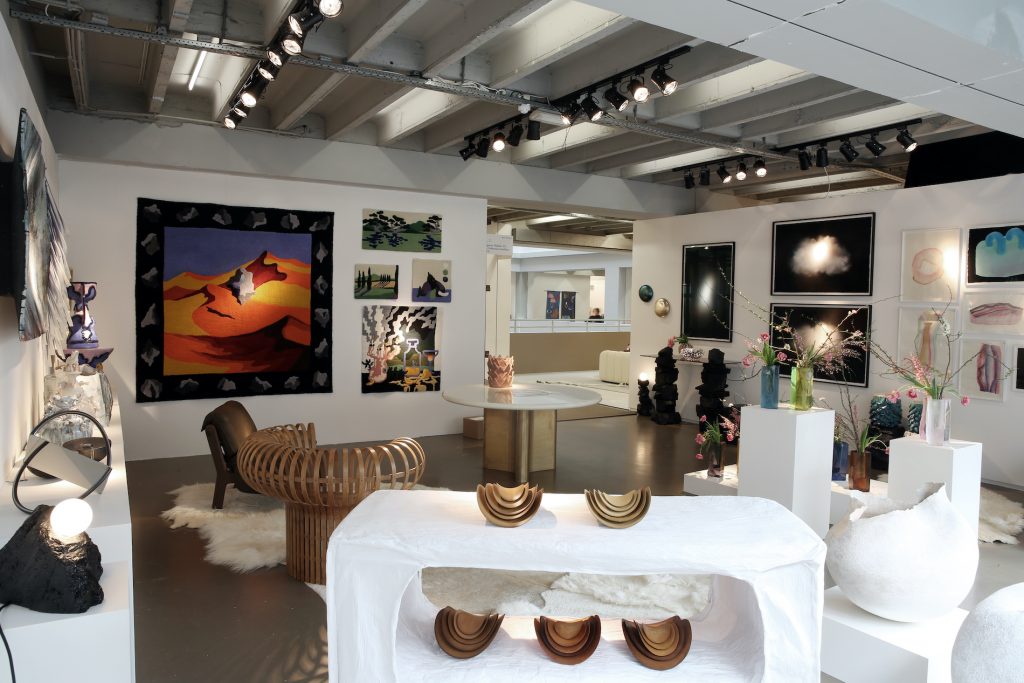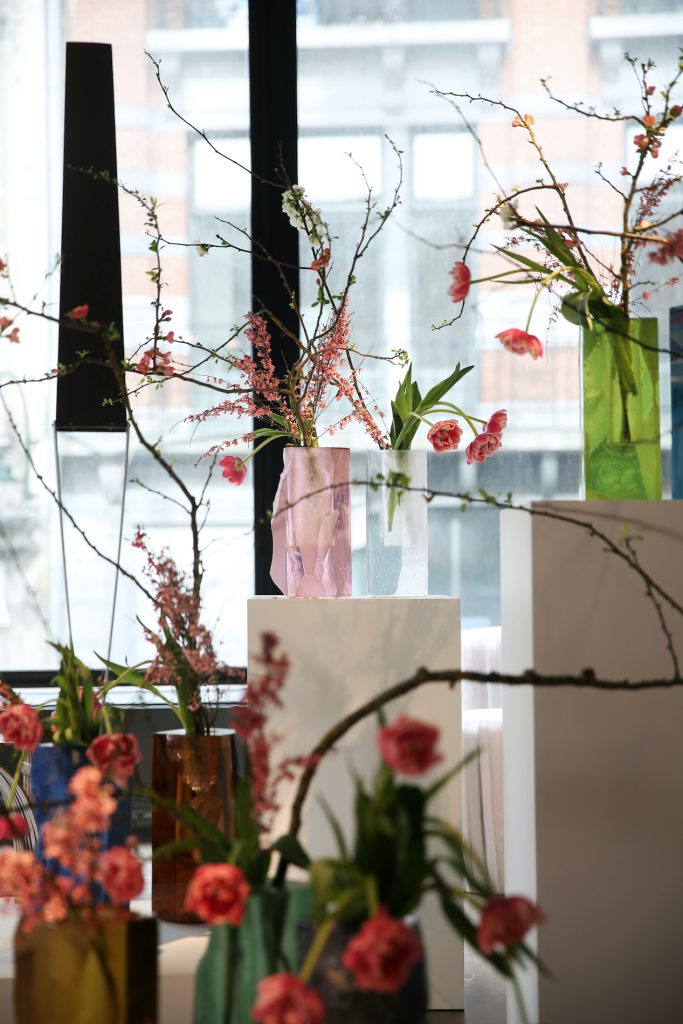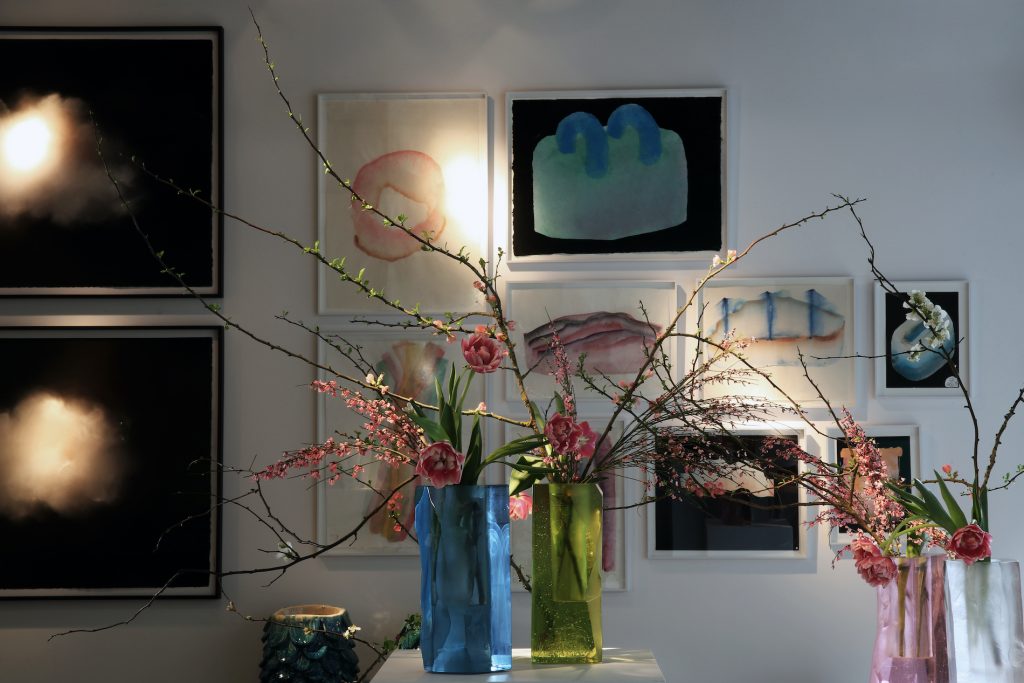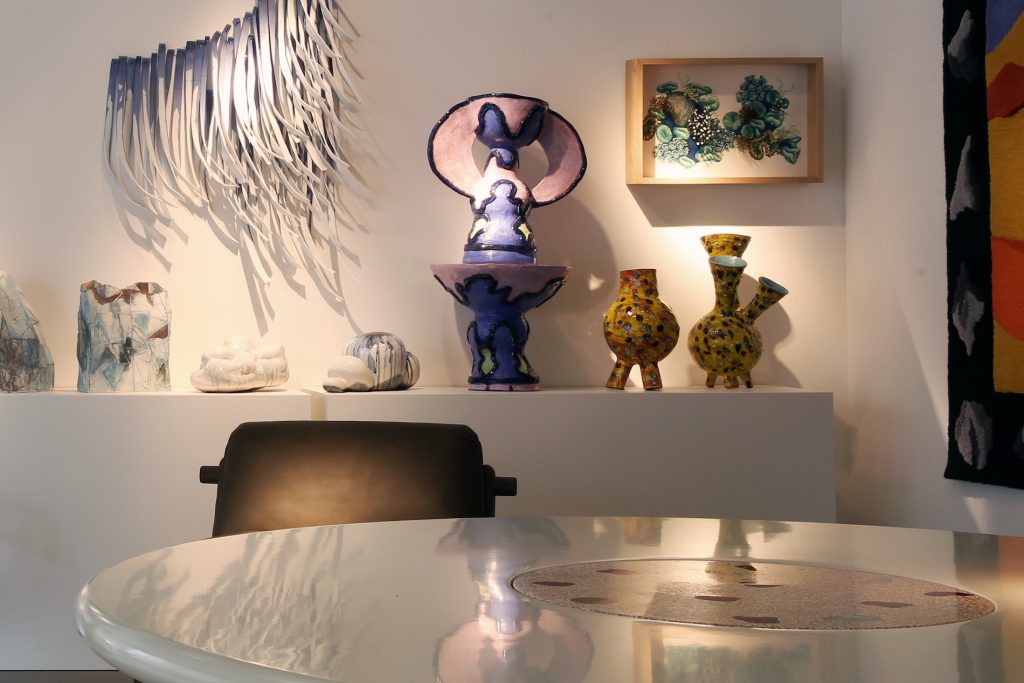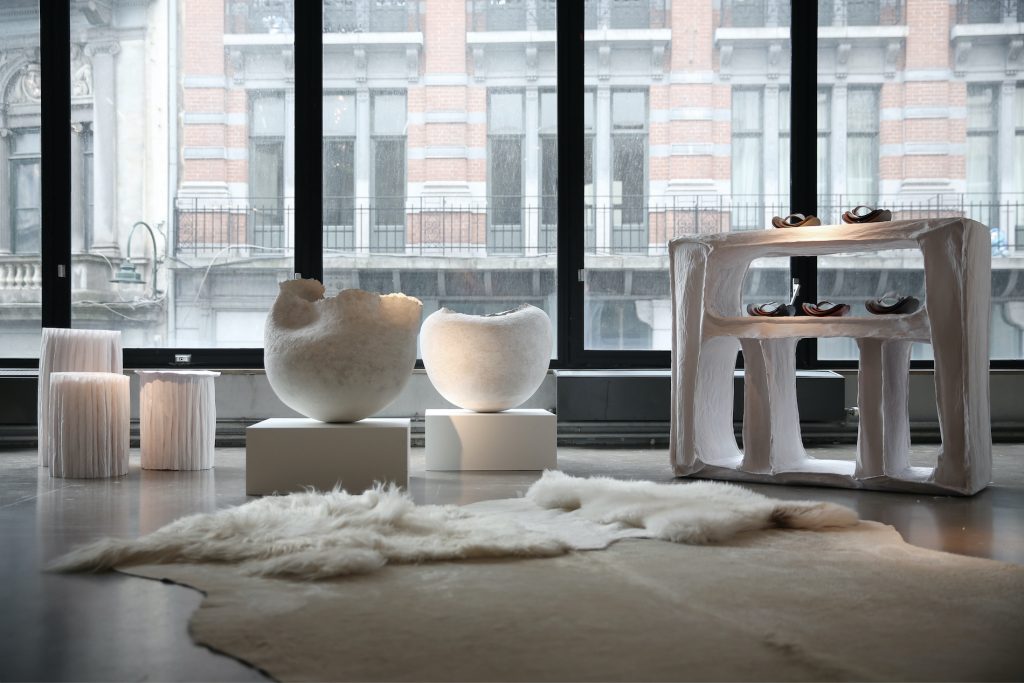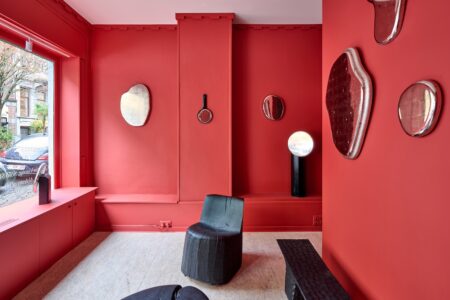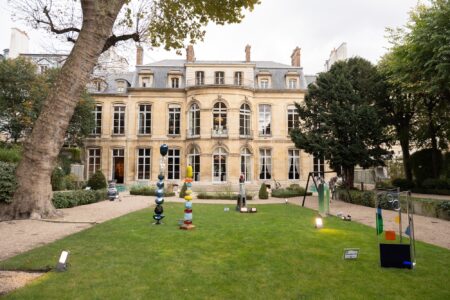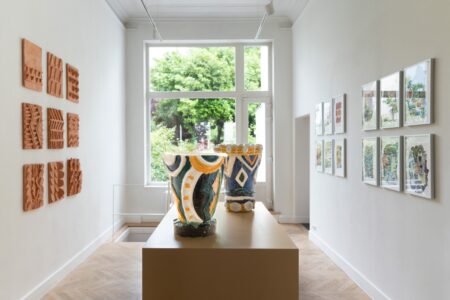
Movement in Stillness: an Imaginary Conversation
An imaginary conversation with Ikebana artist Jozef Prelis Seihô concerning his work at Collectible Art Fair (Brussels March 2020).
You made a flower installation using 9 glass vases by Garnier and Linker as a centerpiece for the exhibition, “Ikebana”, presented by Spazio Nobile Gallery at Collectible Art Fair (Brussels March 2020). What makes this installation Ikebana? Why is it Ikebana?
Without wanting to sound provocative I could say that Ikebana is what Ikebanists do. This explains the huge variety of what we see under the name of Ikebana as practiced by the hundreds of different schools, each with their own approach. Originally there were the very formal, stylized arrangements for sacred spaces, a tradition still practiced by the Ikenobo School since the sixteenth century in Japan. In contrast, during the twentieth century Sogetsu broke away from form and started making free-style sculptural creations, even using all kinds of non-flower materials like metal or plastic. Here, flowers and branches become abstract lines, color, mass… My school, Ohara, dates from the nineteenth century when Western flowers were introduced in Japan. For me, it is characterized by a return to nature, a close observation of nature, and great respect for nature.
Then what would be the common denominator between all these different approaches?
Space. Working with space. Traditionally we say that in Ikebana space represents 75% and flowers only 25%. Or as a Japanese master once explained, “In Ikebana, in order to express the beauty of flowers, we do not arrange the flowers but the space around them”. I think that is very true. I might even go one step further: the role of Ikebana is to invite space, make space visible, make space come alive. In a certain sense, through Ikebana we “create” space.
Would you say that the importance of space is the main difference between Western floral art or flower design?
Yes, definitely! Space allows the different elements to relate to each other. It is these relationships that are important in creating balance or harmony, not so much the elements in themselves. This is exactly what I tried to do with the installation for Spazio Nobile at Collectible. I wanted to create an atmosphere where the different works from the designers and artists presented by the gallery could start to communicate in that space. Rather than trying to add my statement as an “artist”, I look for possibilities where a conversation can take place. In the end, it becomes some kind of dance…
But for that installation, you began with a preconceived plan?
No, no, no. I could quote Pierre Soulages C’est ce que je fais qui m’apprend ce que je cherche, “it’s by doing that I find out what I am looking for”. For me that is essential in Ikebana; I don’t impose my project on the flowers but learn to listen to them. They tell me what is needed in the situation in order to show their beauty. I am not using them to express myself or any preconceived ideas about beauty! I am here to help them manifest their life force to the fullest. The word Ikebana means “living flower”, and in Japanese, it could also be read as “the breath of the flower”. It is that élan that is expressed by Ikebana. Ikebana is movement in stillness.
If I understand correctly what you are saying, this implies a very different role for the Ikebanist as a creative artist?
Yes, of course. A Zen Tea master once said about arranging chabana (simple flowers for the Japanese tea ceremony), “I just get out of the way and let the flowers do the talking”.
That sounds easier said than done.
And that’s where the hard and long training in the discipline of Ikebana comes into play. As long as we are stuck in our own preoccupations, concepts, ambitions, all we do is just add to the confusion. The strict forms of Ikebana help us cut through that neurosis, that kind of frivolity. You use only what is necessary, what is needed in the situation, not what you fancy. At the same time, you see that everything has its place, nothing has to be discarded, thrown away. The Zen tradition talks about “seeing things as they are”. Through discipline, you control any form of potential escape from reality.
How is there any place left then for originality, imagination?
In all of the Zen disciplines, there are three stages of mastery as an artist. The first SHU means to learn: you copy exactly and endlessly what your teacher does. The second HA is to break away: you “unlearn” everything you think you have learned before. Finally, the third RI signifies to transcend: you go beyond any of the forms and find your own style, your own voice. Traditionally it is said that each stage takes about ten years, so your apprenticeship lasts thirty years! I have been studying and practicing Ikebana for a little over 25 years now, but I still have plenty to “unlearn”…
One last question. How would you relate your art of Ikebana with this issue’s theme, “The New Age of Humanism”?
For me the connection is obvious. This way of doing Ikebana does not just apply to our practice as artists or designers, it spills over into the whole of our daily life. It becomes an art of life, life as art. If we stop trying to put our stamp on everything, our version of how things are or should be, we step back and listen, and perhaps start seeing what is really needed rather than adding to the confusion. Instead of filling space we could let space be. And then something truly new or original may come out of that space of not knowing. This implies a very different way of being in the world, an attitude described by Heidegger as Gelassenheit, a letting-be, or an availability for what-is. So, if there is a New Age of Humanism, it can no longer be the old humanism of instrumental rationality, of control, manipulation for our own purposes. It is a Humanism where the human doesn’t take center stage anymore. Humankind is no longer the subject of its destiny with the world as its object. Again, in Heidegger’s terms, we have to confront our condition of Geworfenheit, our being thrown in the world, with no control or predetermined purpose. But if we can live with that radical uncertainty this also gives us an opening full of possibilities…
Jozef Prelis Seihô’s ikebana installation was presented at Collectible Design Fair, Brussels, March 2020. This article was republished from TLmag 33 Extended: New Age of Humanism.
All Photos, Spazio Nobile Gallery at Collectible Art Fair (Brussels March 2020) credits Yen-An Chen.

